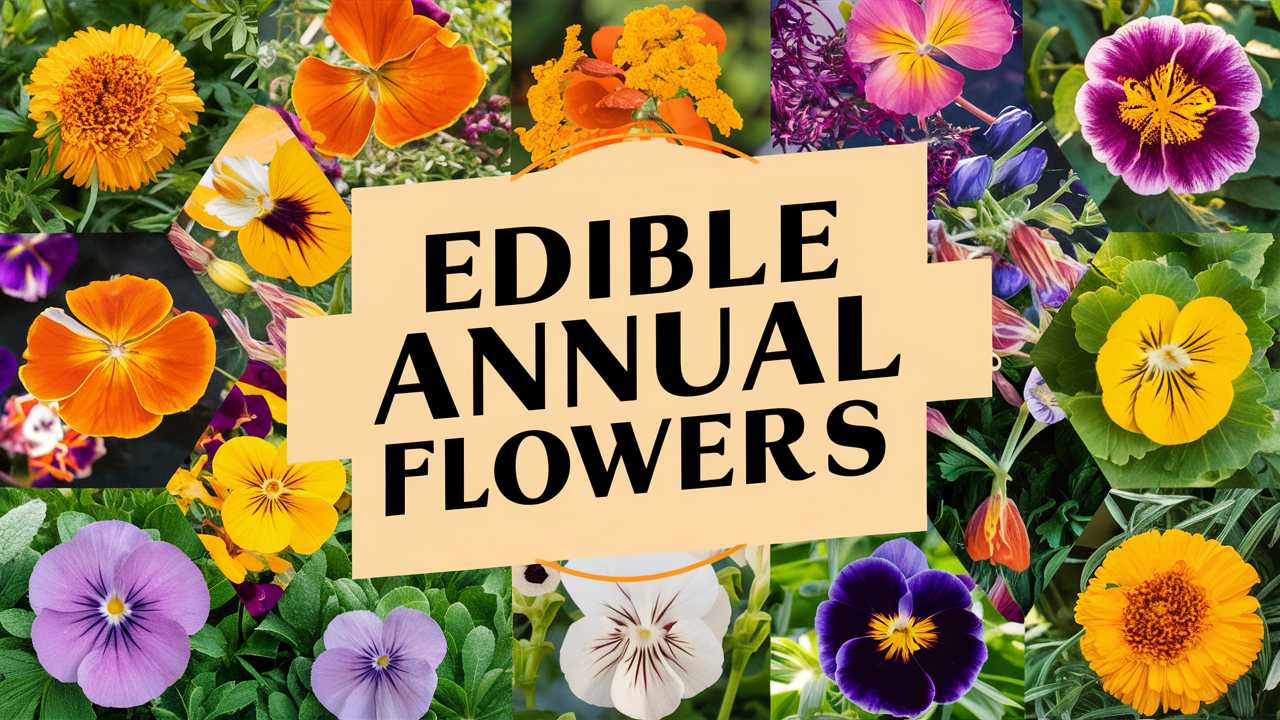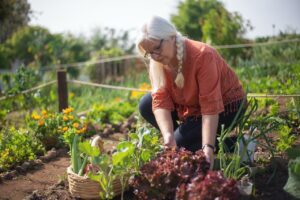In this journey through the world of edible annual flowers, we’ll explore various species that not only appeal to the eye but also to the palate, allowing you to create captivating and delicious dishes.
Let’s dig into each of these edible annual flowers and discover their unique characteristics, flavors, and uses in both the kitchen and the garden.
Bee Balm (Monarda didyma)
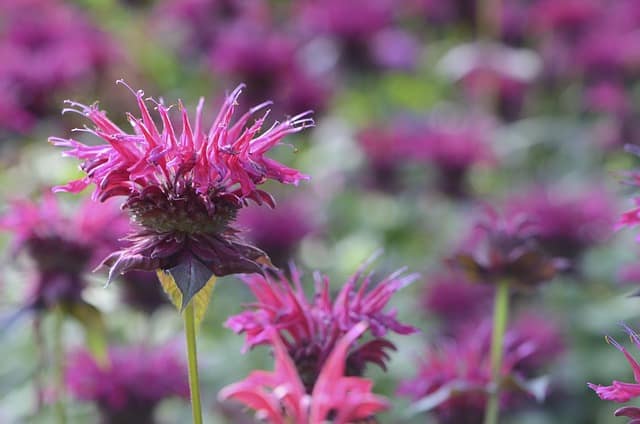
Bee Balm, with its vibrant red or pink blooms, is a showstopper in any garden. Native to North America, this fragrant herb is a member of the mint family. Aside from being a magnet for pollinators, particularly bees and butterflies, Bee Balm offers much more than mere beauty. Its leaves and flowers have a lovely minty flavor, making it a fantastic addition to salads, herbal teas, and jellies.
One of the unique aspects of Bee Balm is its medicinal properties. Historically, indigenous peoples used it for a range of ailments, including digestive issues and colds. The flowers can be used fresh, or you can dry them for later use. When drying, ensure good air circulation, as this helps maintain their vibrant color and flavor.
When incorporating Bee Balm into your culinary repertoire, try using it to garnish soups or as a vibrant decoration atop desserts. A refreshing Bee Balm iced tea can also become a favorite beverage during summertime gatherings. Plant Bee Balm in a sunny spot, and you’ll enjoy its blooms from midsummer to early fall, along with attracting helpful pollinators to your garden.
Borage (Borago officinalis)
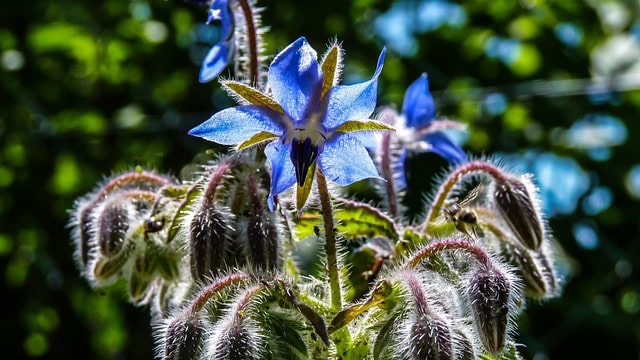
Borage is truly a garden star, with its striking blue, star-shaped flowers that are not only beautiful but edible too. Known for its cucumber-like taste, Borage is delightful in salads, beverages, and as a garnish. A popular use is to freeze the flowers in ice cubes, creating stunning additions to cocktails and punches that will impress your guests.
Borage is also valued in the herbal medicine community for its anti-inflammatory properties and potential to help uplift mood. This easy-to-grow annual thrives in well-drained soil and sunny locations, making it suitable for both experienced and novice gardeners. Its leaves are also edible, though they have a slightly fuzzy texture that some may find off-putting.
Borage’s flowers are rich in antioxidants, contributing not just flavors but also health benefits. As the blooms open in the spring and continue until the first frost, they can be harvested regularly, encouraging the plant to produce even more blossoms. Borage offers a delightful way to enliven dishes, having a subtle flavor that pairs well with fruits, salads, and flavorful cheeses.
Calendula (Calendula officinalis)
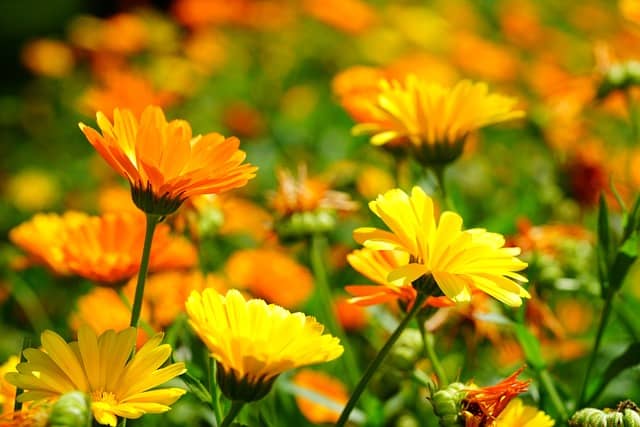
Calendula, often referred to as marigold, boasts striking orange and yellow blooms that not only brighten your garden but also make a culinary splash. With a slightly spicy and peppery flavor, these petals can be used in salads, soups, and rice dishes, imparting both color and taste.
The medicinal properties of Calendula are notable. It has been traditionally used for its anti-inflammatory and wound-healing abilities. Calendula oil, infused with its vibrant petals, is often used in skincare products because of its soothing qualities.
When using Calendula in the kitchen, the petals can be picked fresh and added to dishes, or dried for long-term use. Dried Calendula petals can substitute for saffron, offering a beautiful golden hue to your cooking. They also make a lovely tea that is both refreshing and beneficial for digestive health.
Additionally, Calendula is an excellent companion plant in the garden, attracting beneficial insects while deterring pests. Plant them among your vegetables for a burst of color, and enjoy their quick blooms while reaping multiple benefits for your garden.
Chrysanthemum (Glebionis coronaria)

Although many may associate Chrysanthemums with fall displays, certain varieties are annual flowers with edible leaves and blooms. Often found in Asian cuisines, their slightly bitter flavor is a distinctive addition to salads, stir-fries, and teas. The blossoms come in shades of yellow, orange, and white, adding a decorative touch to your culinary creations.
In addition to their culinary uses, Chrysanthemums have potent anti-inflammatory properties and are often used in traditional herbal medicine. Chrysanthemum tea is a popular beverage known for its calming effects, and it can be enjoyed hot or cold.
To harvest the flowers, pick them when they are in full bloom for the best flavor. The tender leaves can also be used similarly to spinach; they can be sautéed or used in salads. Care should be taken, as they tend to wilt quickly after picking. By planting these flowers in your garden, you’ll both enhance your culinary options and liven up your space with their bright colors.
Geranium (Pelargonium spp.)
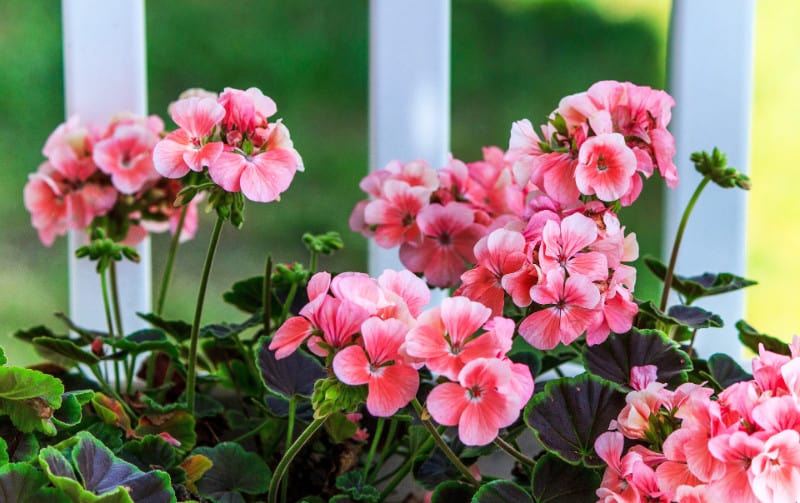
While Geraniums are typically recognized as simple ornamental plants, several varieties are edible and offer unique flavor profiles that can enliven various dishes. Commonly known for their fragrant leaves, these can range from citrusy to minty, depending on the variety. They make delightful additions to salads, desserts, and even infused syrups.
Using Geranium leaves, especially those from scented varieties such as lemon or rose geranium, can elevate dishes to a new level. Imagine a pound cake infused with lemon-scented geraniums, or a refreshing summer drink featuring the subtle hints of rose geranium.
When growing Geraniums, choose well-drained soil and ample sunlight to promote healthy plants. Harvest the leaves regularly to encourage new growth. The flowers, too, are edible and can be used as a beautiful garnish that adds a pop of color to your dishes.
Geraniums not only serve culinary purposes but also attract beneficial pollinators, making them a great addition to your garden ecosystem. Their vibrant blooms can brighten any space while offering an array of flavors that can be explored in the kitchen.
Marigold (Tagetes tenuifolia, Tagetes lucida)
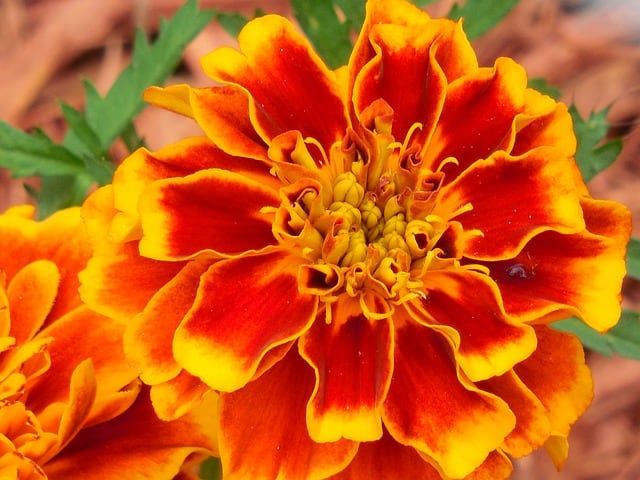
Marigolds are not merely for border decoration; they are edible annual flowers that are a great addition to any garden. Specifically, varieties like Tagetes tenuifolia (French Marigold) and Tagetes lucida (Mexican Marigold) can add both color and flavor to your culinary creations.
Known for their slightly citrusy flavor, Marigold petals can enhance salads, and stir-fries, and work beautifully as a colorful garnish. They can also be steeped in oils to make flavorful dressings and marinades, and their vibrant colors can brighten up any dish.
In addition to their culinary uses, Marigolds are renowned for their pest-repelling properties in the garden. They deter nematodes and other pests, making them ideal companion plants. They thrive in full sun and can tolerate poor soil conditions, making them easy to grow for any gardening novice.
Harvest the petals fresh to ensure maximum flavor and color. Dried Marigold petals are also a popular ingredient in various dishes, offering a similar taste and color. Whether you choose to grow them for their beauty or culinary applications, Marigolds are a useful and attractive addition to your space.
Nasturtium (Tropaeolum spp.)
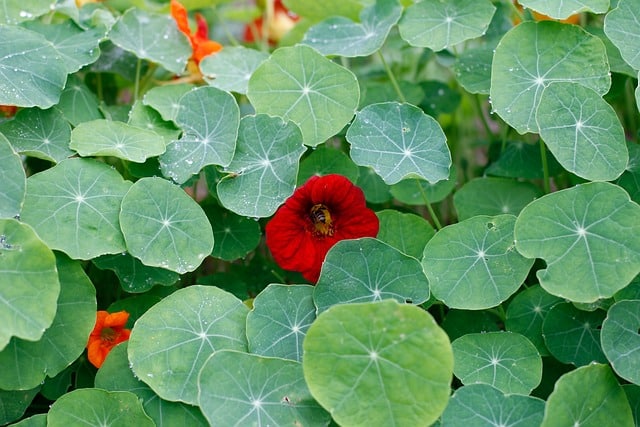
Nasturtiums are vibrant annuals that bring a burst of color to gardens and plates alike. With their bright orange, yellow, and red flowers, they are not just pleasing to the eye but are also edible, embodying a spicy peppery flavor that can enliven a vast array of dishes.
These flowers are particularly dear to those who appreciate edible landscaping and can be used to brighten salads, top sandwiches, or infuse olive oils. The foliage is also edible and has a similar flavor profile, making it an excellent ingredient for salads.
Additionally, Nasturtiums are known for their high vitamin C content, and they can help attract beneficial insects to your garden, making them a dual-purpose plant. They thrive in sunny locations and relatively poor soil, making them easy to cultivate.
You can harvest the flowers and leaves throughout the growing season, encouraging even more blooms as you do. Their vibrant colors make them a favorite for garnishing dishes, and they can create an elegant touch for any meal. Unique and flavorful, Nasturtium is a must-have for every culinary gardener.
Anise Hyssop (Agastache foeniculum)
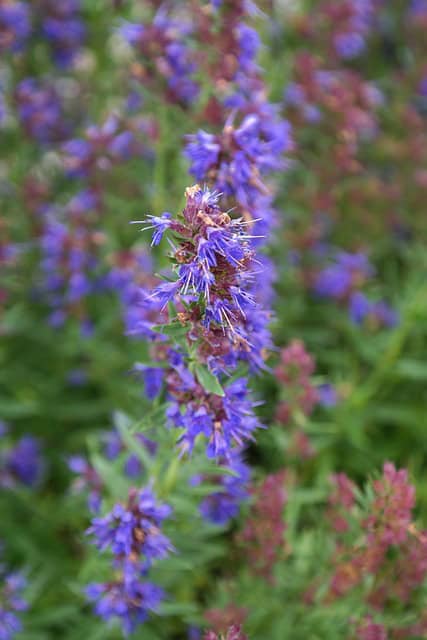
Anise Hyssop, sometimes called blue licorice, is an annual flower known for its soothing anise-like fragrance and flavor. The spikes of tiny purple flowers not only add visual interest to the garden but also bring a sweet herbaceous taste to culinary applications.
The leaves and flowers can be used fresh or dried in teas, salads, and desserts. Infusing honey or vinegar with Anise Hyssop evokes a unique flavor profile, perfect for drizzling over fresh summer fruit or as an ingredient in dressings and marinades.
Anise Hyssop is also revered for its potential health benefits, including aiding digestion and promoting relaxation. Planting it is easy; it prefers a sunny spot with well-drained soil. Once established, it thrives and attracts pollinators, enhancing the biodiversity of your garden.
Harvest the leaves and flowers as needed, ensuring you leave some to continue blooming. Whether you choose to create soothing herbal teas or add a twist to savory dishes, Anise Hyssop provides endless opportunities to explore flavors while enjoying its beauty in your garden.
Squash Blossom (Cucurbitaceae Family)
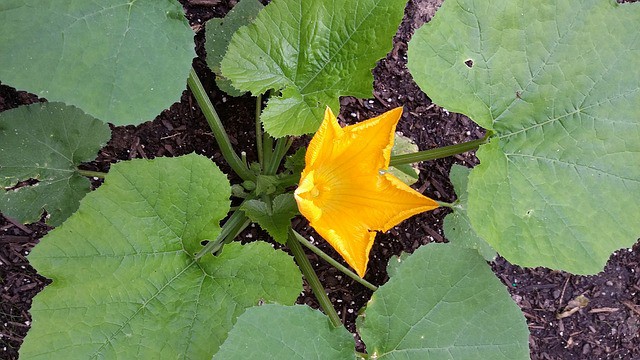
Squash blossoms are one of the culinary world’s most charming flowers, often celebrated in Mediterranean kitchens for their delicate flavor and versatility. These blossoms come from various squash plants, including zucchini and pumpkin, and can be harvested in the morning before they fully open.
The taste of squash blossoms is mild, slightly sweet, and very tender, making them perfect for stuffing, frying, or adding raw to salads. Stuffed squash blossoms, often filled with cheese and herbs, are a classic dish that highlights the delicate texture and flavor of the flowers.
Squash blossoms are best used soon after harvesting, as they have a short shelf life. They should be stored in a cool place, away from moisture, to maintain freshness. Cooking them lightly preserves their structure while providing a delightful addition to your meals.
Growing squash plants not only yields delicious fruit but also the iconic blossoms. With proper care and ample sunlight, you can enjoy fruitful and floral harvests in recipes that make the most of both the squash and its beautiful blossoms.
Violet (Viola spp.)

Violets are another charming addition to the garden that often goes unnoticed. The delicate purple, white, or yellow flowers not only offer a delightful aesthetic but are also edible, with a mild, sweet flavor. Violets can be used in salads, desserts, and as garnishes, providing a subtle beauty and taste to dishes.
These flowers are rich in vitamins A and C, making them a healthy addition to your meals. Candied violets are a classic treat, providing stunning decoration for cakes and pastries. When making candied violets, gently coat them in egg white and sugar, then allow them to dry, resulting in a beautiful and sweet edible decoration.
Violets thrive in shady areas, often self-seeding, meaning once you plant them, they may return year after year. Their resilience and ease of care make them suitable for beginner gardeners. Regularly harvesting the flowers can encourage additional blooms, ensuring a sustained supply throughout the growing season.
Having violets in your garden not only beautifies the landscape but also invites flavors to your kitchen that are both nostalgic and fresh. Consider adding them to your herb teas or using them to decorate celebratory cakes; their beauty and flavor can enchant any dish.


